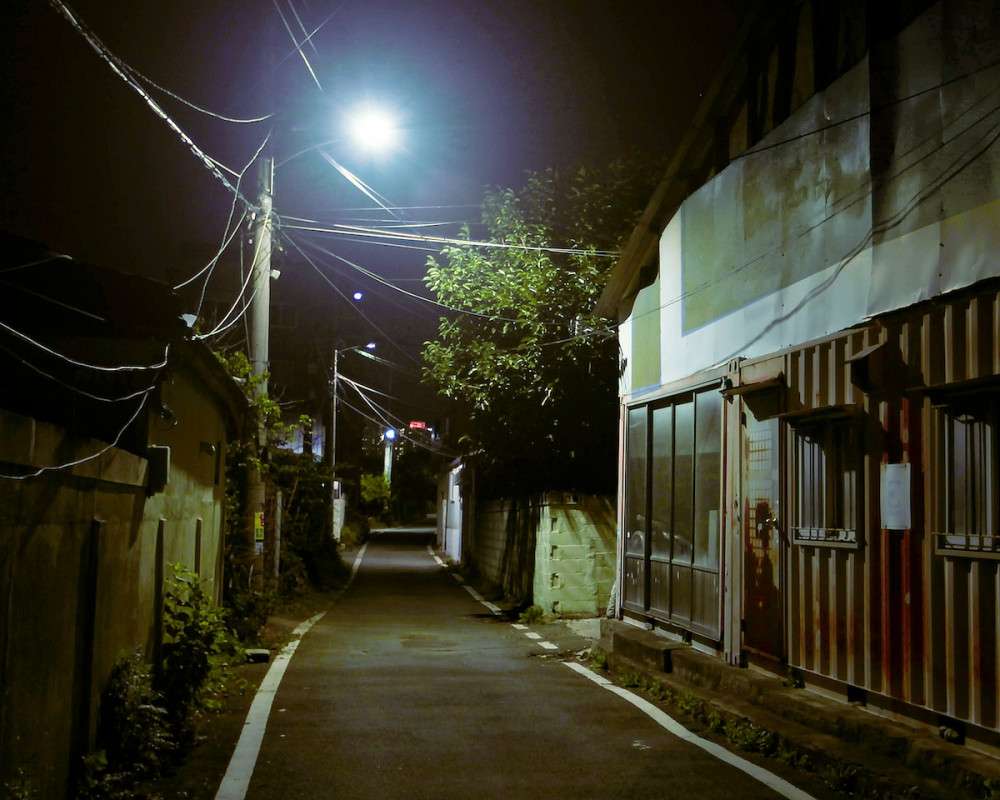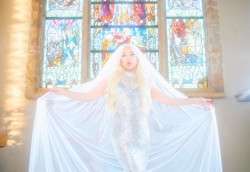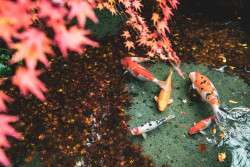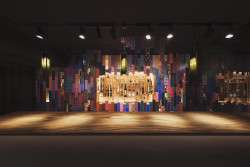
August 14, 2025
Yurei: Japanese Spirits of Summer?
The real and imagined ghosts of Japan
White kimono. White skin. Long black hair. The movie monster costume of the yurei, or Japanese ghost, has become as recognizable as Dracula’s cape or Jason’s hockey mask. Since the J-horror boom of the early 2000s brought them to the world’s attention, yurei have taken their place as a permanent part of the horror land. They’ve been imitated, parodied and marketed—yet rarely understood. What most people know only scratches the surface. Yurei are far more than pop culture ephemera.
The most direct translation of yurei is “dim spirit” but this reveals little of what they actually are. They stem from an ancient Japanese belief that humans have what amounts to a god inside of them—a powerful, supernatural spirit held in check only by the meat-cocoon of the body. On death, this spirit is unleashed. If properly respected with the appropriate rituals, it becomes a protective ancestor spirit—a sorei. But if something goes wrong—if the spirit has some lingering business or if the rituals are not properly performed—then you have a yurei to contend with.
The nature of the yurei depends on the unfinished business. They each have a purpose—they want something, and desire binds them to the earthly plane. Sometimes this desire can be harmless, affectionate even. Stories are told of yurei who appear to deliver a last “thank you” they never said in life, or keep a promised appointment with a beloved friend. Sometimes the purpose is bitter. A grudge-bearing yurei out for revenge—called an onryo—is one of the most terrifying creatures in Japanese folklore and religion. But even the most powerful onryo can be pacified and transformed into a beneficial deity: As the Buddhist monk Jien wrote in the 12th century, once a yurei’s claims have been settled, it is appeased and ceases to trouble the world.
Belief in yurei is one of the keystones of Japanese culture. In his 1903 book Japan: An Attempt at Interpretation, Lafcadio Hearn wrote that without understanding the relationship of the Japanese people with ghosts, you could never understand Japan. Indeed, this symbiotic relationship—where the living need to pacify the dead and the dead in return watch over the living—stretches as far back as the Jomon period (14,000-300 BCE). Where other ancient cultures saw great mystical beings in the sky, pounding out lightning bolts with silver hammers or crashing through the night on winged horses, Japan saw only the dead.
During the Heian period (794-1185 CE), the ghost-religion Goryo Shinko played an important role in both politics and theology. To calm the spirits of the dead, not only were official rituals performed but the deceased were posthumously raised in rank and title, then enshrined as kami—protector spirits in Shinto shrines. The belief was so pervasive that a ceremony was established and observed in the Imperial Court welcoming new entrants into the ranks of protective spirits. Although Goryo Shinko’s importance declined following the arrival of Buddhism, its influence lives on in places such as the controversial Yasukuni shrine, where Japan’s war dead—known as eiryo, meaning “heroic dead”—are enshrined as kami.
This belief is not reserved to ancient times or political maneuvering. Richard Lloyd Parry, Asia Editor for The Times of London, was confronted by Japan’s ghosts when researching the 2011 tsunami that killed nearly 20,000 people in a single swipe of the ocean. Investigating the aftermath, Parry was surprised by reports of yurei and possession in the disaster zones. Wives told of husbands rolling around in the mud like crazy people, shouting that, “Everything must die and be lost!” People told stories of phantom figures in their bedrooms leaving behind wet footprints. Fire stations got midnight calls summoning help to houses that no longer existed.
In response, Buddhist priests set up emergency exorcism shelters and performed rituals to pacify those who had been killed. Mediums were brought in to communicate with the dead. They urged them to let go of their resentment and attachment, and to transform into protectors of Japan and its people.
As Parry found, the belief, respect—and fear—of yurei is deeply ingrained in Japanese society. The ghosts of Japan are very real and not something to be taken lightly. Inside every person lives supernatural potential energy, a force that can protect or devastate depending on the circumstances. Yurei are like fire—they can warm you and heal you or burn out of control and destroy you.
It is only appropriate, then, that summer is Japan’s season of the supernatural. As the temperature rises, the walls between anoyo and konoyo—the worlds of the dead and the living—become thin. In the West, ghosts are creatures of the harvest, manifesting when a bloated, fungoid moon hangs in the sky and the icy death of winter looms large. But in Japan, yurei emerge in the midst of the year’s most oppressive swelter. Relief from the heat comes in the form of telling “chilling” tales of yurei and other kaidan (ghost stories) that send a shiver down your spine.
Since the Edo period, kabuki theaters have debuted their new ghost plays in the summer, while even modern Japan reserves its horror movies and creepy TV shows for the summer’s sultry airwaves. In July and August, obon (the Festival of the Dead) is held across the country to celebrate the return of those who have passed from this world.
With summer comes the return of the san o-yurei, the three most famous ghosts of Japan. There’s Otsuyu, the yurei of love from Botan Doro (The Peony Lantern), who came to her lover at night but was revealed by the light of day to be nothing more than a rotting skeleton. In Yotsuya Kaidan (Ghost Story of Yotsuya), the vengeful, poison-ravaged face of the yurei Oiwa appeared in a lantern as she tormented the faithless husband who killed her. Then there’s the odd plate-counting Okiku, from whom terrifying tales of girls in wells still arise today. These are the three ghosts that every Japanese child knows.
While Otsuyu and Oiwa may be more terrifying, there’s no yurei more Japanese than Okiku. After all, Botan Doro is adapted from a Chinese story, while Oiwa was created for kabuki theater and comes from the mind of a single author. Only Okiku is a true folktale.
Okiku seems to have sprung directly from the soil of Japan. In his book Nihon no Sarayashiki Densetsu (The Japanese Legend of the Plate Mansion), Atsushi Ito identified at least 48 variations of the Okiku legend spread across the country. From locations as far away as Kanra in Gunma Prefecture to Lafcadio Hearn’s residence in Matsue, Shimane or from Hata in Kochi all the way down to the Goto archipelago off the coast of Nagasaki, any village with a medieval castle and an old well seems to have its own Okiku legend. Each is slightly different but similar enough to be recognizable. You can even see Okiku’s influence in modern movie yurei like Sadako from Ringu (remade in English as The Ring). The dead girl in the well never stays down.
And yet, Okiku’s motivations remain the most obscure. Otsuyu’s desire to be loved and Oiwa’s lust for revenge are easily understood, applicable in any culture. But Okiku simply wants to clean up the mess she made and find that missing tenth plate. Perhaps that’s what makes her so quintessentially Japanese. Whatever the reason, deep down in her well she waits for summer to come so that she can rise and count the plates again.
Learn more about Japan’s foremost folklore chronicler:
Lafcadio Hearn (Yakumo Koizumi) and His Many Lives
■ Zack Davisson is the author of Yurei: The Japanese Ghost and The Ghost of Oyuki (Chin Music Press) and the translator of Shigeru Mizuki’s Eisner-nominated Showa: A History of Japan (Drawn & Quarterly). He writes extensively about Japanese ghost stories at his website, www.hyakumonogatari.com.
■ Richard Lloyd Parry’s “Ghosts of the Tsunami” was published by the London Review of Books in February 2014. It can be read here:http://meturl.com/tsunamighost
■ Tokyo-based photographer Olivier Leroy’s “Ghost Story” images are available as fine art prints. www.olivierleroyphoto.com







